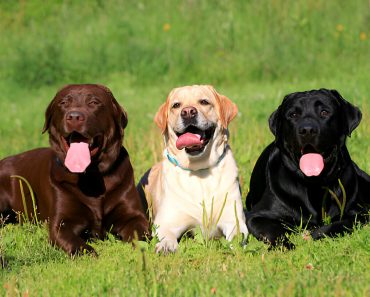Canine Behavior , Dogs are incredibly expressive animals, and their behaviors can often tell us a lot about how they’re feeling and what they need. Here’s a guide to some common dog behaviors and what they might mean.
Canine Behavior ,Tail Wagging

Canine Behavior
Tail wagging is a complex and nuanced form of communication for dogs. Contrary to popular belief, a wagging tail doesn’t always signify a happy dog. The speed, direction, and position of the wag can convey a range of emotions and intentions.(canine behavior)
Fast Wagging with a Relaxed Body
When a dog’s tail is wagging quickly and their body is relaxed, it usually means the dog is happy, excited, and friendly. This type of wag is commonly seen when a dog greets their owner or during playtime.(canine behavior)
Slow, Stiff Wagging
A slow, stiff wag can indicate caution or uncertainty. The dog might be assessing a new situation or person and isn’t quite sure how to react. It’s a sign that the dog is alert and potentially on guard.(canine behavior)
Wagging to the Right
Studies have shown that dogs tend to wag their tails more to the right when they see something or someone they perceive positively. This might occur when a dog sees their favorite person, another friendly dog, or something they like.
Wagging to the Left
Conversely, a tail wagging more to the left can indicate anxiety, stress, or a negative reaction. This might happen when a dog encounters a stranger, an unfamiliar dog, or something they find threatening.(canine behavior)
High Tail Wagging
When a dog’s tail is held high and wagging, it can be a sign of dominance or confidence. The dog is feeling assertive and is possibly in a leadership or protective mode.
Low Tail Wagging
A tail held low and wagging slowly might indicate submission or fear. The dog might be trying to show that they are not a threat or that they are feeling intimidated.(canine behavior)
Circular Wagging
Sometimes, a dog will wag their tail in a circular motion, almost like their tail is spinning. This is often a sign of extreme happiness and excitement, commonly seen when greeting a beloved family member or during playtime.(canine behavior)
Context Matters
It’s important to consider the context and the dog’s overall body language when interpreting tail wagging. A wagging tail should not be the sole indicator of a dog’s mood or intentions. Observing other signals such as ear position, facial expressions, and body posture will provide a clearer understanding of what your dog is trying to communicate.
By paying attention to these details, you can better understand your dog’s emotions and needs, ensuring a stronger and more empathetic bond with your furry friend.(canine behavior)
Barking
Barking is one of the most common forms of communication for dogs, and it can convey a wide range of messages depending on the context, tone, and pattern. Understanding the different types of barking can help you respond appropriately to your dog’s needs and emotions.(canine behavior)
Continuous Rapid Barking
Continuous rapid barking often serves as an alert. This type of barking can indicate the presence of a stranger or an intruder. It’s a way for your dog to alert you to potential danger or something unusual in their environment.
- Example: A dog standing at the window, barking rapidly at a passerby or a delivery person.(canine behavior)
High-Pitched Yapping
High-pitched yapping usually indicates excitement or a desire to play. This type of bark is common in smaller breeds but can be exhibited by any dog when they are overly excited.
- Example: A dog yapping excitedly when you come home or when they see another dog they want to play with.
Low, Prolonged Barking
A low, prolonged bark can be a sign of a threat or something that makes your dog feel defensive. This type of barking is deeper and more resonant, often meant to warn off perceived threats.
- Example: A dog barking with a deep, sustained sound at an unfamiliar person approaching the house.(canine behavior)
Short, Sharp Barking

Canine Behavior
Short, sharp barks can indicate surprise or being startled. This is often a single or a few quick barks that occur when something unexpected happens.
- Example: A dog giving a quick bark when they hear a sudden noise like a doorbell or a loud bang.
Rhythmic Barking
Rhythmic barking, where the dog barks in a repetitive and rhythmic pattern, can indicate that your dog is bored or seeking attention. This type of barking is often persistent and can be a way for your dog to express frustration or loneliness.
- Example: A dog left alone for long periods might bark rhythmically to express their boredom or need for interaction.
Whining Bark
A whining bark is a mix of a bark and a whine, often indicating distress, anxiety, or a desire for something. This type of barking is often softer and higher-pitched.
- Example: A dog whining and barking when they are left alone or when they want to go outside.
Context Matters
As with tail wagging, the context in which your dog is barking is crucial for understanding their message. Observing the environment, the triggers, and your dog’s body language will help you decipher the true meaning behind their barks.
Responding to Barking
- Assess the Cause: Determine why your dog is barking. Are they alerting you to something? Are they bored or anxious?
- Provide Stimulation: Ensure your dog has enough physical and mental stimulation to prevent boredom-related barking.
- Training: Use training techniques to teach your dog appropriate barking behavior. Positive reinforcement can help reduce unnecessary barking.
- Address Anxiety: If your dog is barking due to anxiety, work on creating a calm and secure environment for them. Consider consulting a veterinarian or a professional dog trainer for severe cases.
Licking
Licking is a natural and common behavior in dogs that can have multiple meanings. Understanding why your dog licks can help you respond appropriately and ensure their well-being.
Affection and Bonding
One of the primary reasons dogs lick their owners is to show affection. Licking releases endorphins that provide comfort and pleasure, similar to how humans feel when they hug someone.
- Example: A dog licking your face or hands when you return home is likely expressing their love and happiness to see you.
Communication
Licking can be a form of communication. Puppies lick their mother’s face to signal that they are hungry or need attention. Adult dogs might lick you to get your attention or to communicate their needs.
- Example: A dog licking your hand might be trying to get your attention for food, playtime, or a walk.
Grooming and Hygiene
Dogs use licking as a way to groom themselves and each other. This behavior helps keep their coat clean and can be a bonding activity between dogs.
- Example: A dog licking their paws or another dog’s face is likely engaging in grooming behavior.
Taste and Exploration
Dogs explore the world through their sense of taste. Licking objects or people helps them gather information about their environment.
- Example: A dog licking a new object or a person they just met is likely trying to learn more about them through taste.
Stress and Anxiety
Excessive licking may indicate stress or anxiety. Dogs might lick themselves, objects, or people as a coping mechanism when they feel anxious.
- Example: A dog licking their paws excessively or licking objects around the house might be experiencing anxiety or stress.
Medical Issues
Sometimes, licking can indicate a medical problem. Dogs might lick themselves excessively if they have allergies, skin irritations, or pain.
- Example: A dog constantly licking one specific area of their body might have an injury or skin condition that requires veterinary attention.
Submission

Canine Behavior
Licking can also be a submissive gesture. When dogs lick the face or mouth of another dog or a person, it can be a sign of respect and submission.
- Example: A dog licking another dog’s mouth or a person’s chin might be showing submissiveness and respect.
Context Matters
The context in which your dog licks can provide clues to their motivation. Consider the situation, your dog’s overall behavior, and any potential stressors or changes in their environment.
Responding to Licking
- Affectionate Licking: If your dog licks you out of affection, you can enjoy the bonding moment or gently redirect their attention if it becomes excessive.
- Attention-Seeking Licking: If your dog is licking to get your attention, ensure you are meeting their needs for exercise, play, and companionship.
- Anxiety-Related Licking: For excessive licking due to anxiety, create a calming environment and consider consulting a veterinarian or professional dog trainer.
- Medical Licking: If your dog is licking excessively due to a possible medical issue, schedule a veterinary check-up to rule out any underlying health problems.
Digging
Digging is a natural behavior for dogs, often rooted in their instincts and various needs. Understanding the reasons behind your dog’s digging can help you address the behavior effectively and ensure your dog’s well-being.
Creating a Cool Spot
One common reason dogs dig is to create a cool spot to lie down, especially in hot weather. By digging, they expose cooler soil that provides relief from the heat.
- Example: A dog digging a shallow hole in the yard on a hot day to lie in the cooler dirt.
Prey Drive
Dogs with a high prey drive might dig in an attempt to catch burrowing animals like moles or rabbits. This instinctive behavior is more common in breeds originally bred for hunting or digging.
- Example: A terrier digging persistently in a specific spot where they smell or hear a small animal underground.
Boredom and Excess Energy
Dogs might dig out of boredom or to burn off excess energy. This is often seen in dogs that don’t get enough physical or mental stimulation.
- Example: A dog left alone in the yard for long periods might start digging to entertain themselves.
Comfort and Nesting
Digging can be a way for dogs to create a comfortable resting place. This behavior is often observed indoors when dogs dig on the couch or bed before lying down.
- Example: A dog scratching and digging at their bed or blankets to create a cozy nest before settling down to sleep.
Seeking Escape or Adventure
Some dogs dig under fences or gates in an attempt to escape the yard. This could be driven by a desire to explore, find a mate, or follow a scent trail.
- Example: A dog digging at the base of a fence to squeeze underneath and explore the neighborhood.
Attention-Seeking Behavior
Dogs may dig to get their owner’s attention, especially if they have learned that digging elicits a response. This behavior can become a way for dogs to interact with their owners, even if the attention is negative.
- Example: A dog digging in the garden and looking back at their owner, seeking a reaction or interaction.
Stress and Anxiety
In some cases, digging can be a coping mechanism for stress or anxiety. This behavior might be seen in dogs experiencing separation anxiety or those reacting to loud noises like thunderstorms.
- Example: A dog digging frantically during a thunderstorm or when left alone for extended periods.
Context Matters
As with other behaviors, the context in which your dog is digging can provide insights into their motivations. Observing when and where your dog digs can help you determine the underlying cause.
Responding to Digging
- Provide Adequate Exercise and Stimulation: Ensure your dog gets plenty of physical and mental exercise to reduce boredom and excess energy.
- Create a Designated Digging Area: If your dog loves to dig, consider creating a designated digging spot in your yard where they can dig freely.
- Address Environmental Factors: Provide cool, shaded areas for your dog to rest in hot weather to prevent digging for cool spots.
- Monitor and Secure Your Yard: Check your yard for potential escape routes and reinforce fences to prevent escape digging.
- Reduce Stress and Anxiety: Create a calm and secure environment for your dog and consider training or professional help if anxiety is causing the digging.
By understanding the reasons behind your dog’s digging behavior, you can take appropriate steps to manage it and ensure your dog’s needs are met.
Head Tilting
Head tilting is one of the most endearing behaviors exhibited by dogs, and it often piques the curiosity of dog owners. Understanding the reasons behind this behavior can help you better communicate with and respond to your furry friend.

Canine Behavior
Curiosity and Attention
Dogs often tilt their heads when they hear an unfamiliar or interesting sound. This behavior helps them focus on the sound and may allow them to hear it more clearly.
- Example: A dog tilting their head when you speak to them in a high-pitched voice or when they hear a new noise like a doorbell.
Trying to Understand
Head tilting can be a sign that your dog is trying to understand what you are saying. Dogs are attuned to human speech and gestures, and tilting their heads may help them better comprehend your words and facial expressions.
- Example: A dog tilting their head when you ask if they want to go for a walk or mention a favorite toy.
Improving Vision
Some dogs tilt their heads to get a better view of something. This behavior can help them see around their muzzles, especially if they have a broad or long snout.
- Example: A dog tilting their head to get a clearer view of an object, another animal, or a person.(canine behavior)
Seeking Positive Reinforcement
Dogs quickly learn that certain behaviors elicit positive responses from their owners. Head tilting often results in affectionate reactions, treats, or attention, reinforcing the behavior.(canine behavior)
- Example: A dog tilting their head because they notice it makes you smile and respond with praise or a treat.(canine behavior)
Response to Novelty
Dogs may tilt their heads in response to new or novel stimuli. This behavior indicates that they are engaged and processing new information.(canine behavior)
- Example: A dog tilting their head when introduced to a new toy or when hearing an unusual sound like a musical instrument.(canine behavior)
Sign of Medical Issues
In some cases, head tilting can be a sign of a medical issue, such as an ear infection, vestibular disease, or neurological problem. If the head tilting is persistent or accompanied by other symptoms like imbalance, you should consult a veterinarian.(canine behavior)
- Example: A dog consistently tilting their head to one side and showing signs of discomfort or disorientation.(canine behavior)
Context Matters
Observing the context in which your dog tilts their head can provide clues about their motivations. Consider the environment, stimuli, and your dog’s overall behavior when interpreting head tilting.(canine behavior)
Responding to Head Tilting
- Engage and Communicate: When your dog tilts their head, engage with them positively. Use this moment to communicate and strengthen your bond.
- Monitor for Health Issues: If head tilting is frequent or accompanied by signs of illness, consult a veterinarian to rule out medical problems.
- Reinforce Positive Behavior: If you enjoy your dog’s head tilting, reinforce it with praise and treats. This can encourage them to repeat the behavior.
- Provide Stimulation: Ensure your dog has plenty of mental and physical stimulation to keep them engaged and curious.(canine behavior)
Rolling Over: Decoding Your Dog’s Behavior
Rolling over is a charming and often amusing behavior displayed by dogs. While it may seem simple, there are several reasons why your furry friend might roll over, each revealing different insights into their emotions and needs.(canine behavior)
Trust and Submission
When a dog rolls over and exposes their belly, it’s often a sign of trust and submission. By exposing their vulnerable underside, they are showing that they feel safe and comfortable in your presence.
- Example: Your dog rolls over onto their back when you approach them, indicating that they trust you and view you as a friend.
Playfulness and Invitation
Rolling over can also be a playful gesture, especially during interactions with other dogs or humans. It’s a way for dogs to engage in friendly play and invite others to join in.
- Example: Your dog rolls over during playtime and looks at you with anticipation, signaling that they want to continue playing or receive belly rubs.
Physical Comfort
Sometimes, dogs roll over simply because it feels good. Rolling on their back allows them to stretch their muscles, scratch an itch, or find a comfortable position for rest.(canine behavior)
- Example: Your dog rolls over onto their back on a soft carpet or grassy patch, enjoying the sensation and relief it brings.(canine behavior)
Submission to Authority
In some cases, rolling over can be a sign of submission to a more dominant dog or person. It’s a way for dogs to avoid conflict and acknowledge the other individual’s leadership.
- Example: Your dog rolls over when meeting a new dog or encountering a person they perceive as dominant, indicating respect and deference.(canine behavior)
Attention-Seeking Behavior
Dogs may also roll over as a way to garner attention and affection from their owners. They learn that rolling over elicits positive responses and may use it as a tactic to get what they want.
- Example: Your dog rolls over and looks at you expectantly, hoping for a belly rub or a treat as a reward for their cute behavior.
Context Matters
Understanding the context in which your dog rolls over is key to interpreting their behavior accurately. Pay attention to the situation, your dog’s body language, and any accompanying vocalizations to decipher their intentions.(canine behavior)
Responding to Rolling Over
- Acknowledge and Reward: When your dog rolls over, acknowledge their behavior with praise, petting, or treats. Positive reinforcement strengthens the bond between you and encourages repeat behavior.
- Respect Their Comfort: If your dog rolls over for a belly rub, be gentle and respectful of their boundaries. Some dogs may not enjoy belly rubs or may only tolerate them for a short time.
- Observe for Signs of Discomfort: If your dog suddenly starts rolling over more frequently or seems hesitant to do so, it could be a sign of discomfort or pain. Monitor their behavior and consult a veterinarian if necessary.(canine behavior)
Yawning
Yawning is a behavior not limited to humans; dogs also yawn for various reasons. While it may seem simple, yawning in dogs can convey a range of emotions and serve as a form of communication. Let’s delve into the different meanings behind your furry friend’s yawns.(canine behavior)
Relaxation and Contentment
Similar to humans, dogs often yawn when they are feeling relaxed and content. It’s a way for them to release tension and communicate their comfort in a particular environment.(canine behavior)
- Example: Your dog yawns while lounging on their favorite spot on the couch or during a leisurely stroll in the park, indicating a sense of calm and contentment.(canine behavior)
Calming Signal
Yawning can also serve as a calming signal in social interactions. Dogs may yawn to diffuse tension or communicate their peaceful intentions when encountering other dogs or unfamiliar situations.
- Example: Your dog yawns when meeting a new dog at the park or during a training session, signaling that they are not a threat and are open to friendly interaction.
Fatigue or Sleepiness
Similar to humans, dogs yawn when they are tired or sleepy. Yawning can be a sign that your dog needs rest and is ready to settle down for a nap or bedtime.
- Example: Your dog yawns repeatedly in the evening as they wind down for the night, indicating that they are ready to relax and sleep.
Stress or Anxiety
In some cases, yawning in dogs can be a response to stress or anxiety. Dogs may yawn as a coping mechanism in situations that make them feel uneasy or overwhelmed.
- Example: Your dog yawns frequently during a visit to the veterinarian or when exposed to loud noises like thunderstorms, indicating discomfort or nervousness.(canine behavior)
Communication of Empathy

Canine Behavior
Recent studies suggest that dogs may yawn in response to seeing humans or other dogs yawn, indicating a form of empathy. This contagious yawning behavior is thought to reflect social bonding and emotional connection.
- Example: Your dog yawns when you yawn or when they see another dog in the household yawning, demonstrating a shared emotional response.canine behavior(canine behavior)
Context Matters
Understanding the context surrounding your dog’s yawns is crucial for interpreting their meaning accurately. Consider the situation, your dog’s overall behavior, and any potential stressors or stimuli present.canine behavior
Responding to Yawning
- Provide Comfort and Support: If your dog yawns in response to stress or anxiety, offer them reassurance and a calming presence to help them feel more secure.
- Ensure Adequate Rest: If your dog yawns frequently due to fatigue, ensure they have a comfortable sleeping area and sufficient opportunities for rest throughout the day.
- Monitor for Changes: If your dog’s yawning patterns suddenly change or become excessive, it may indicate an underlying health issue. Monitor their behavior and consult a veterinarian if necessary,(canine behavior)
Understanding your dog’s behavior can strengthen your bond and enable you to address their needs more effectively. By paying attention to the context and specifics of their actions, you can decode what your furry friend is trying to tell you and ensure they are happy, healthy, and well-cared for. (canine behavior)






